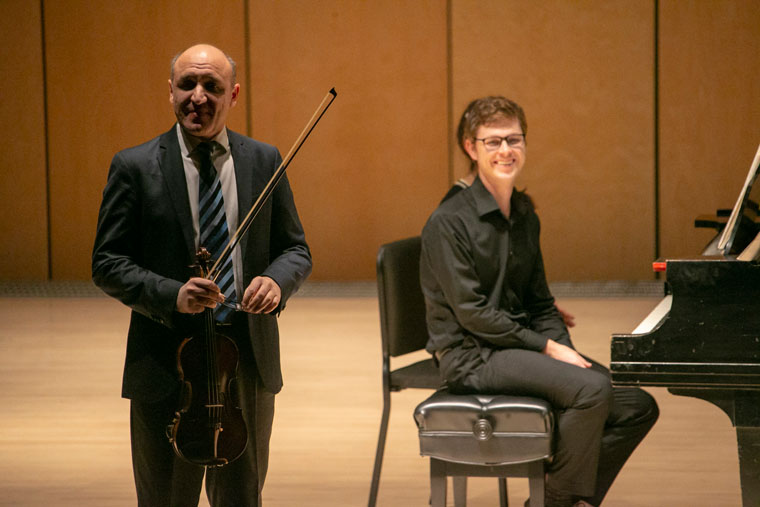
Photo by Jenny Kirchner
By Art Connor
Contributor
When opportunities arise for a renewal of interest in any particular subject, especially in the area of live musical performances, it is in the nature of this reviewer to investigate. One such opportunity came into play last Monday evening, Nov. 4, with the return of Idyllwild Arts Academy alumnus Jassen Todorov (class of 1994) to the campus from his post as professor of violin at San Francisco State University. Considering the 25-year hiatus, as well as his academic background at Harid Conservatory in Florida and the Eastman School in upstate New York, the follow-up to his return visit was encouraging enough with the prospective survey of Ludwig van Beethoven’s compositions for violin and piano in the works.
The overall outlay of last Monday’s concert consisted of the first four violin and piano sonatas, presented in compositional order, with the Opus 12 set as the lead-in Todorov made his mark early on with a general display of his violin tone and technique in the traversal of the first two of the sonatas (in D Major and A Major respectively).
His chosen instrument — a 1778 Neapolitan model from the workbench of Tomaso Eberle — gave out the pulse and rhythm of the fast first and third movements accurately, if a bit diffidently, minimizing the effect of “sincere admiration” for previous composers’ efforts in this area (particularly Haydn, Mozart and the dedicatee of the set, Beethoven’s teacher Antonio Salieri) and bringing forth the melodic form in all of the slow movements. Dr. Michael Smith’s piano accompaniment acted as a further complement to this presentation — perfunctorily enough and even in tone, without any particular dramatics for the sake of exposition.
It was with the final two sonatas, following a short intermission, that the concert really took off to the height it was capable of reaching, both in the compositional material and the overall sonorous effect. The third sonata of the Opus 12 (or “Salieri” set), in the key of E flat, proved the relevance of the apposite piano accompanying as far as Smith was concerned — E flat being more friendly a key to a pianist than a violinist — but Todorov had the situation well in hand from the beginning. And with the transition to the minor mode of the succeeding Opus 23 sonata (a rousing “Presto” in A minor) from the jubilant rondo finale of Opus 12 #3, the somewhat superficial effects of the concert’s first half were dispelled, again without much (unnecessary) brilliance, but an overall mastery of bowing technology and sound production. Likewise, in the Opus 23 finale (another rondo movement, but this time in minor and with subtle enough tempo variations), the effect in sum was the precise melding of virtuosity (when needed) and accuracy of intonation.
Audience reaction, though displayed throughout the performance enthusiastically, was most intent following the whole concert. One can only wish for a return engagement at William M. Lowman Concert Hall by these two perfectly matched individuals for the remaining six Beethoven violin sonatas during next year’s prospective events in celebration of the composer’s 250th birth year.




